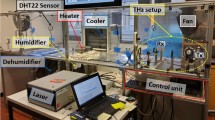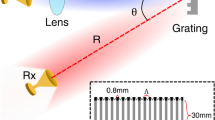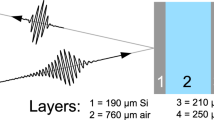Abstract
IT appears to be of interest and value, in relation to current investigations on the circumstances of wireless transmission at short ranges, to note the intensity of reflection of electric waves that might be expected at the sharp boundary of an ionised layer, high in the atmosphere. The term sharp here implies. practically that the transition is completed in, say, not less than one-tenth or, for nearly direct incidence, one-fifth of a wave-length. The relative amplitudes in the reflected waves are then, for the two polarised components, given sufficiently by the Fresnel expressions When the index of refraction is 1 v where v is small, they become e.g. for rays inclined at 30° to the horizontal they are 2v and v.
This is a preview of subscription content, access via your institution
Access options
Subscribe to this journal
Receive 51 print issues and online access
$199.00 per year
only $3.90 per issue
Buy this article
- Purchase on Springer Link
- Instant access to full article PDF
Prices may be subject to local taxes which are calculated during checkout
Similar content being viewed by others
Author information
Authors and Affiliations
Rights and permissions
About this article
Cite this article
LARMOR, J. Atmospheric Electric Transmission. Nature 115, 566–567 (1925). https://doi.org/10.1038/115566b0
Issue Date:
DOI: https://doi.org/10.1038/115566b0
Comments
By submitting a comment you agree to abide by our Terms and Community Guidelines. If you find something abusive or that does not comply with our terms or guidelines please flag it as inappropriate.



